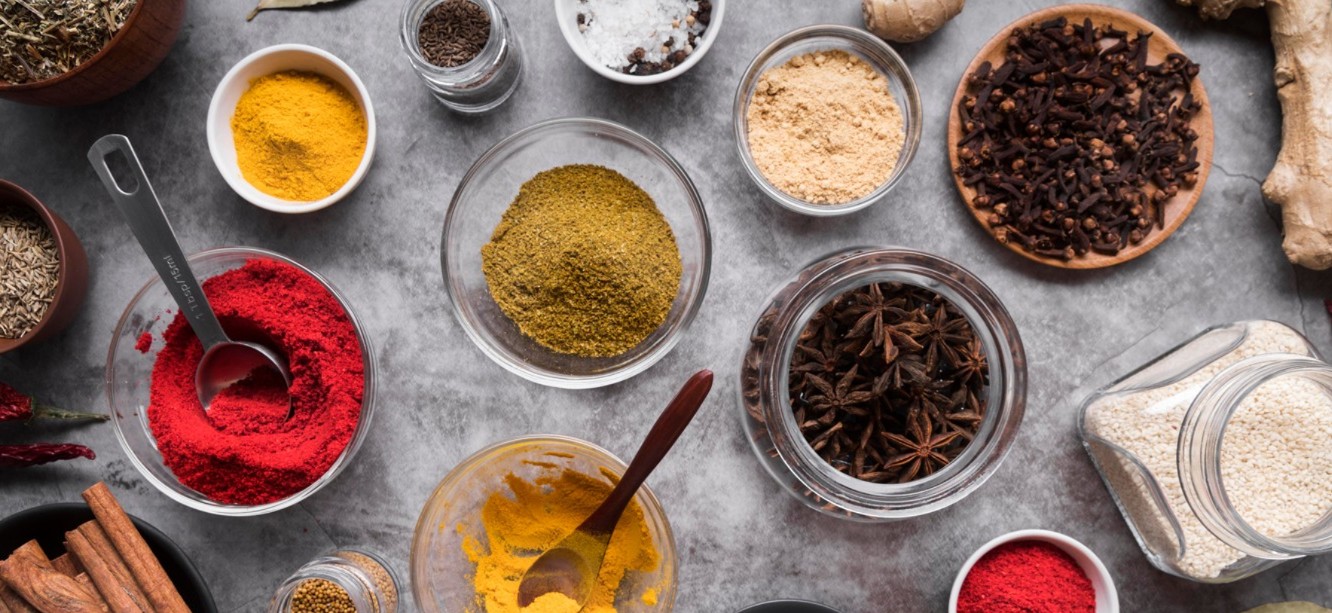From chai to pilau: The best spices to keep you warm this cold season

These spices boost circulation by stimulating vasodilation, creating a gentle warmth while also strengthening immune and respiratory health—vital during flu and cold season.
As temperatures drop and the chill settles into our bones, many of us instinctively reach for heavy coats and hot drinks to keep warm. Yet across cultures and centuries, people have relied on another line of defence against the cold: warming spices.
These bold, aromatic ingredients do more than enliven your meals. They stimulate circulation, aid digestion, and strengthen immunity.
More To Read
- Why ginger and cloves deserve a daily spot in your kitchen
- Recipe: The spiced orange cake with unforgettable taste
- Traditional kashata recipe: Sweet coconut treat ready in under 30 minutes
- Six natural remedies to ease a sore throat at home
- Kenya Power reports record electricity demand amid cold season and rising connections
- Battle of the dough: What’s the difference between kaimati and mitai?
From cinnamon’s sweet warmth to cayenne’s fiery kick, here are seven powerful spices that not only season your food but also nurture your body and spirit.
1. Cinnamon
Few spices evoke comfort like cinnamon. With its rich aroma and gentle sweetness, this bark-based spice has been used in Ayurvedic and Chinese medicine for centuries to stimulate warmth and blood flow.
How to use:
• Stir into oatmeal, chai tea, or hot cocoa
• Sprinkle over baked sweet potatoes, roasted squash, or make cinnamon rolls
• Add to apple cider or mulled wine for a festive, warming drink
Cinnamon pairs especially well with other warming spices like nutmeg and cloves, amplifying its cosy character.
2. Ginger
Fresh or dried, ginger is a powerhouse. It boosts circulation, fights inflammation, and is often used to soothe cold-induced sniffles or stomach troubles. When the weather turns cold, ginger provides a clean, energising heat.
How to use:
• Brew fresh ginger tea with lemon and honey
• Grate into soups, stir-fries, or morning smoothies
• Add ground ginger to cookies, curries, or even pumpkin pie
Pro tip: Simmer fresh ginger in milk with cardamom and turmeric for a warming golden latte.
3. Cardamom
Sweet, spicy, and slightly floral, cardamom is often called the “queen of spices.” It warms the body while supporting digestion and respiratory health, making it especially valuable during the cold season.
How to use:
• Add crushed pods to tea or coffee (especially masala chai)
• Mix into rice dishes such as pilau or biryani
• Use ground cardamom in baked goods, particularly with cinnamon and nutmeg
Cardamom blends beautifully with dairy and is a favourite in many Middle Eastern and South Asian desserts.
4. Cloves
Strong, aromatic, and deeply warming, cloves are rich in antioxidants and known for their natural numbing properties—perfect for soothing sore throats and easing cold symptoms.
How to use:
• Simmer in spiced tea
• Add whole cloves to slow-cooked stews or braised meats
• Mix ground cloves into cookies, spice blends, or rice puddings
A little goes a long way—cloves are intense and best used sparingly.
5. Nutmeg
Nutmeg offers a soft, nutty flavour with subtle heat. While not spicy in the traditional sense, it is deeply warming and known for its calming effects—ideal for cosy evenings.
How to use:
• Grate into hot milk, eggs, or custards
• Add to mashed potatoes, creamy soups, or pumpkin dishes
• Sprinkle on lattes, French toast, or roasted vegetables
For the best flavour, use whole nutmeg and grate fresh—the aroma is unmatched.
6. Turmeric
Bright, earthy, and slightly bitter, turmeric may not deliver fiery heat, but it provides deep internal warmth. Known as an anti-inflammatory hero, it supports immunity and digestion.
How to use:
• Whisk into golden milk with ginger, cinnamon, and black pepper
• Add to lentils, curries, or roasted cauliflower
• Use in soups or bone broth for depth and healing warmth
Always combine with black pepper—it boosts turmeric’s absorption by over 2,000%.
7. Cayenne pepper
If you’re seeking instant heat, cayenne is the answer. This fiery chilli pepper stimulates circulation and metabolism, often bringing a rosy flush to the cheeks—the internal equivalent of a warm blanket.
How to use:
• Sprinkle into soups, stews, and bean dishes
• Add a pinch to hot chocolate for a spicy kick
• Stir into marinades, rubs, or sautéed vegetables
If you’re new to cayenne, start small and increase gradually—it’s really hot.
Spice combinations: Build your own heat
These spices are magical on their own but even more powerful in blends. Try these classics:
Masala chai: cinnamon, cardamom, cloves, ginger, black tea, milk
Golden milk: turmeric, ginger, cinnamon, black pepper, nutmeg
Pumpkin spice: cinnamon, nutmeg, cloves, ginger, cardamom
Homemade curry powder: turmeric, cumin, ginger, cayenne, cloves
These blends work beautifully in everything from drinks and desserts to rice dishes and roasts, bringing both warmth and wellness to your meals.
What makes these spices truly “warming” is how they affect the body’s circulation and digestion.
Many stimulate vasodilation, improving blood flow and creating a gentle sensation of warmth. Others support immune and respiratory health, essential during the flu and cold season.
As the cold settles in, don’t just turn up the heat—turn to your spice rack.
Top Stories Today












































